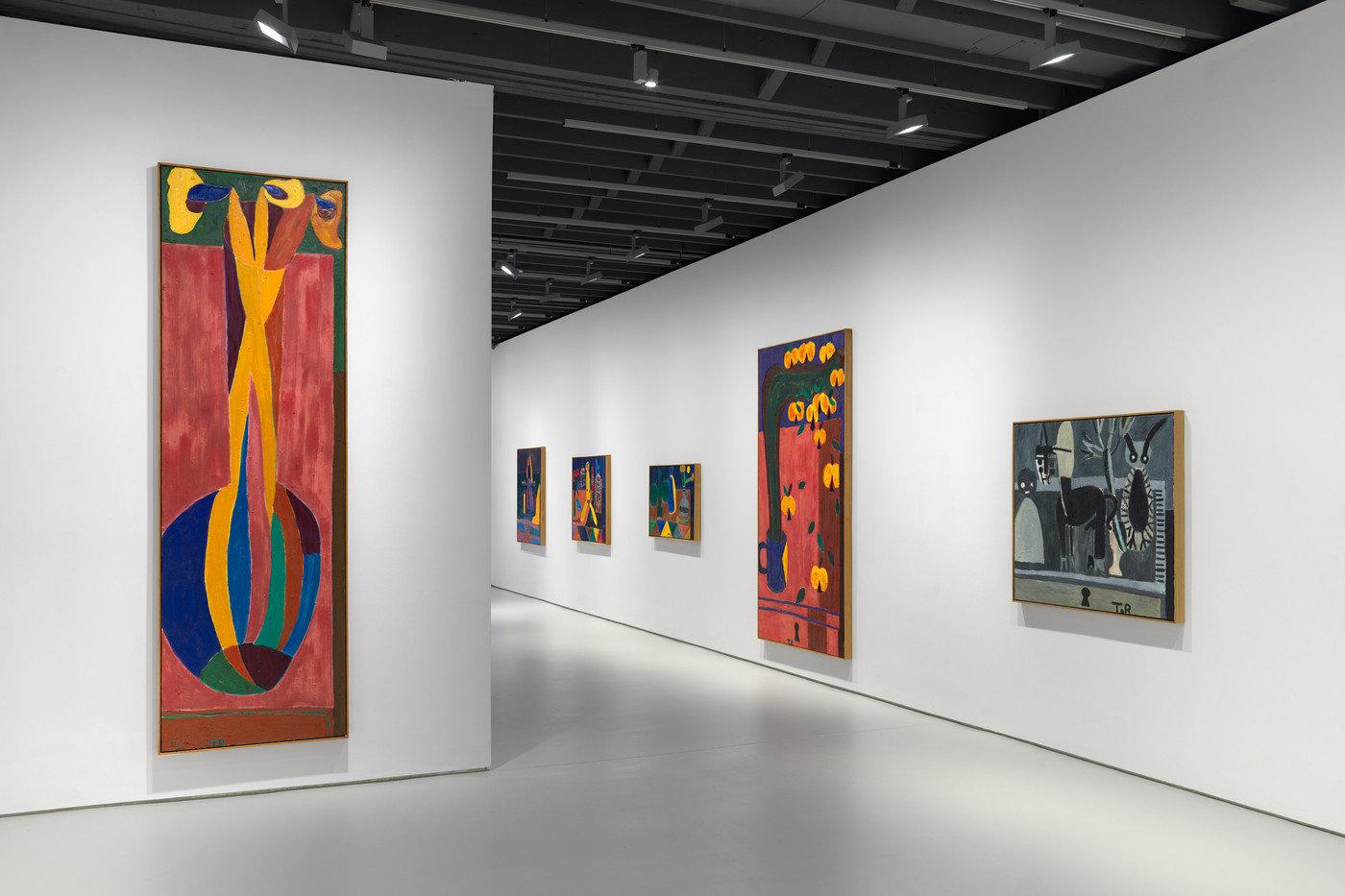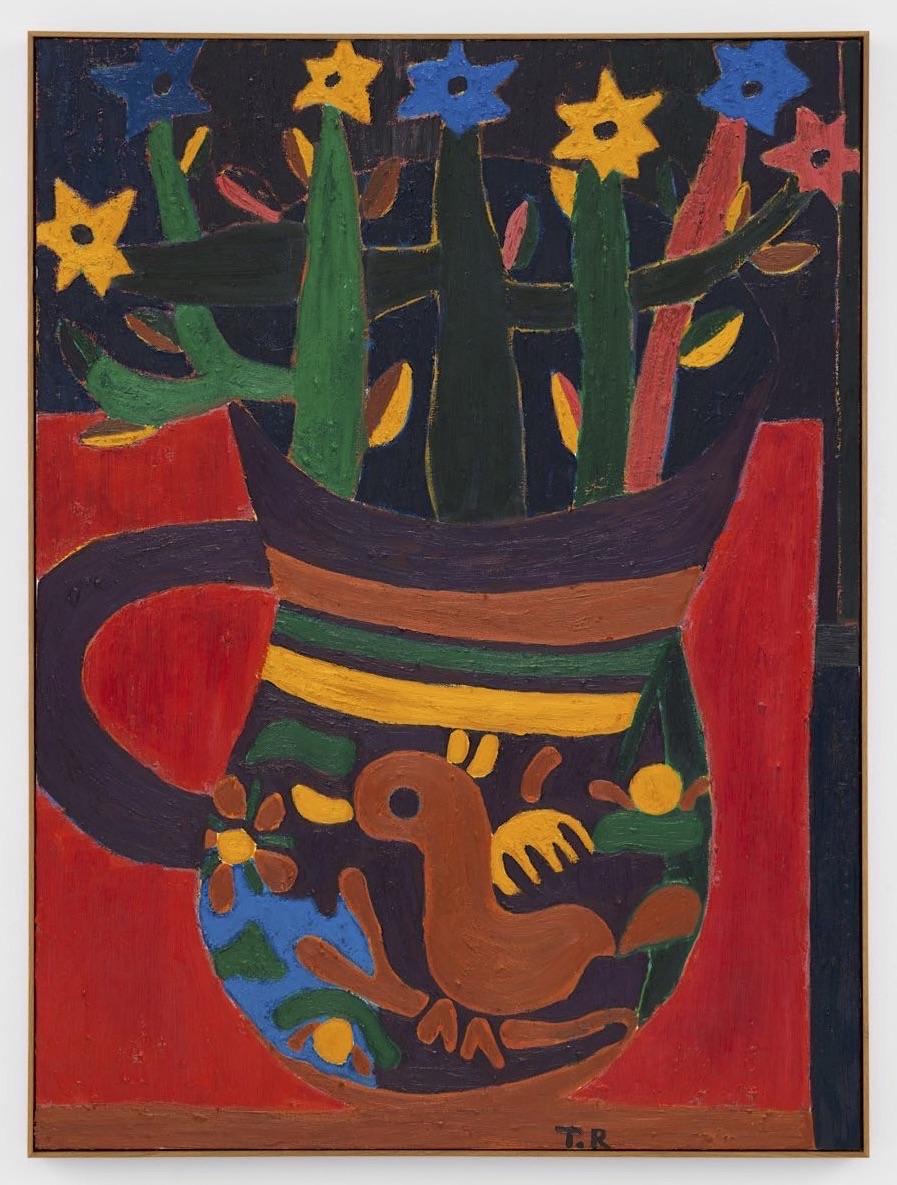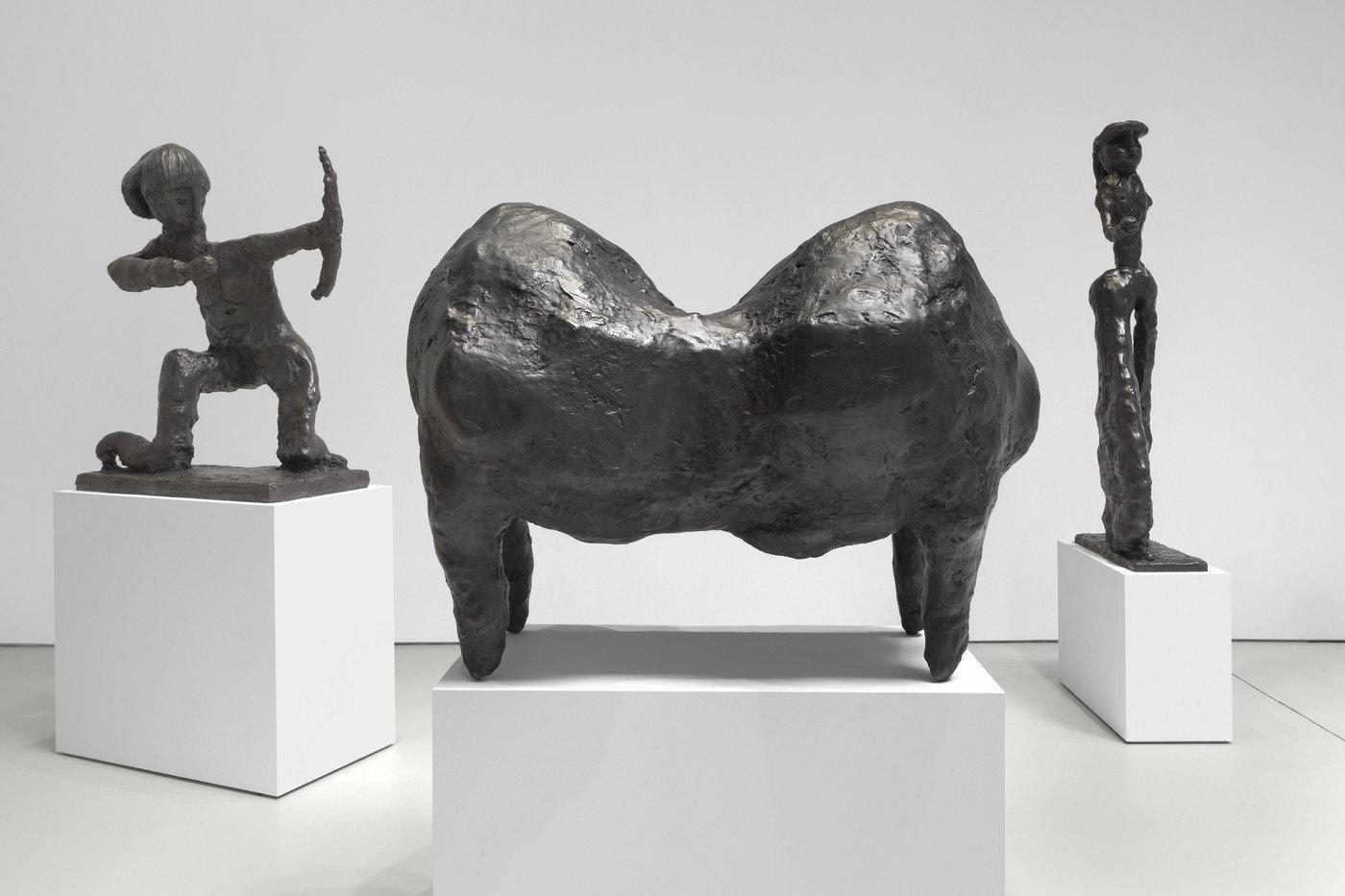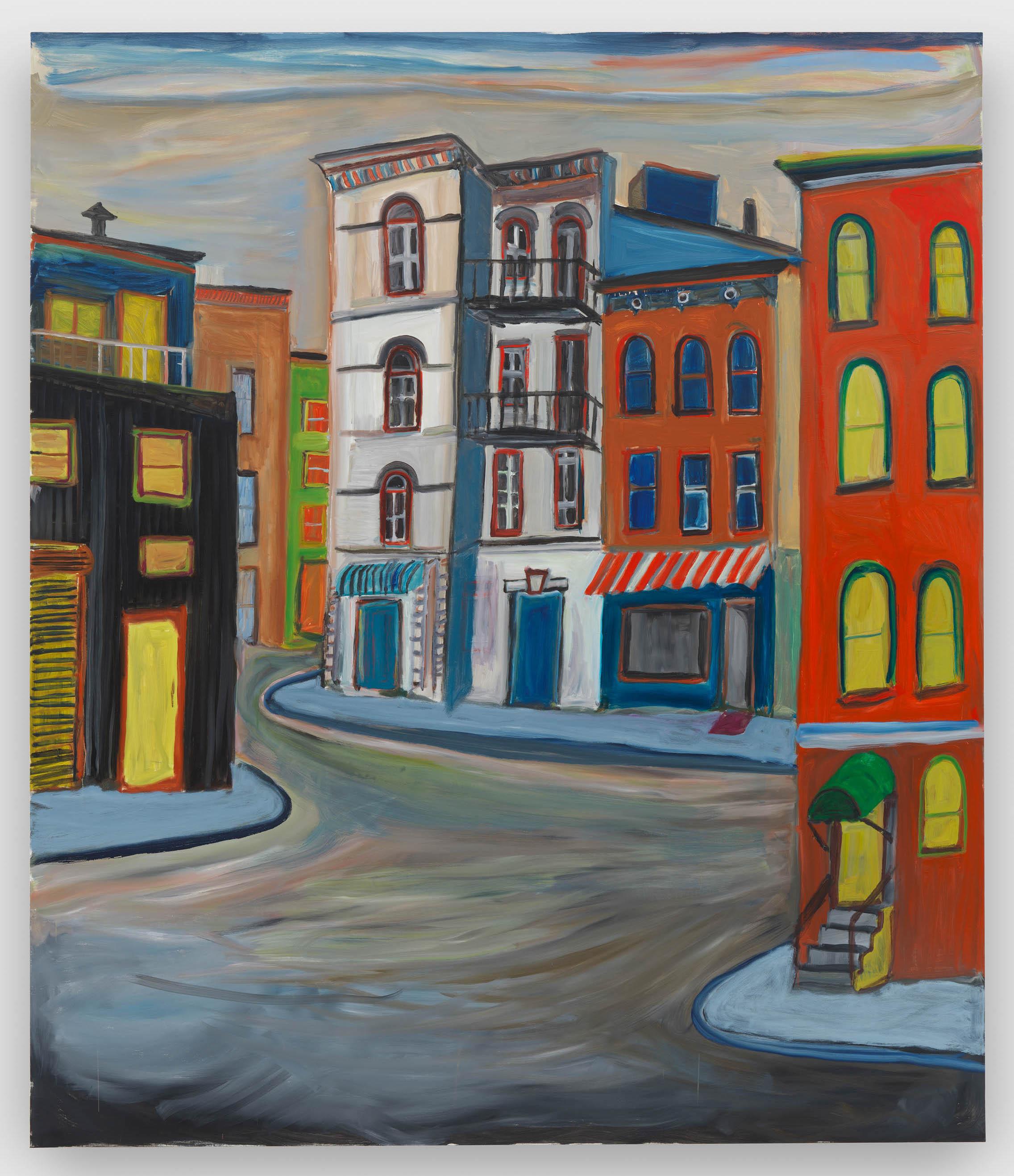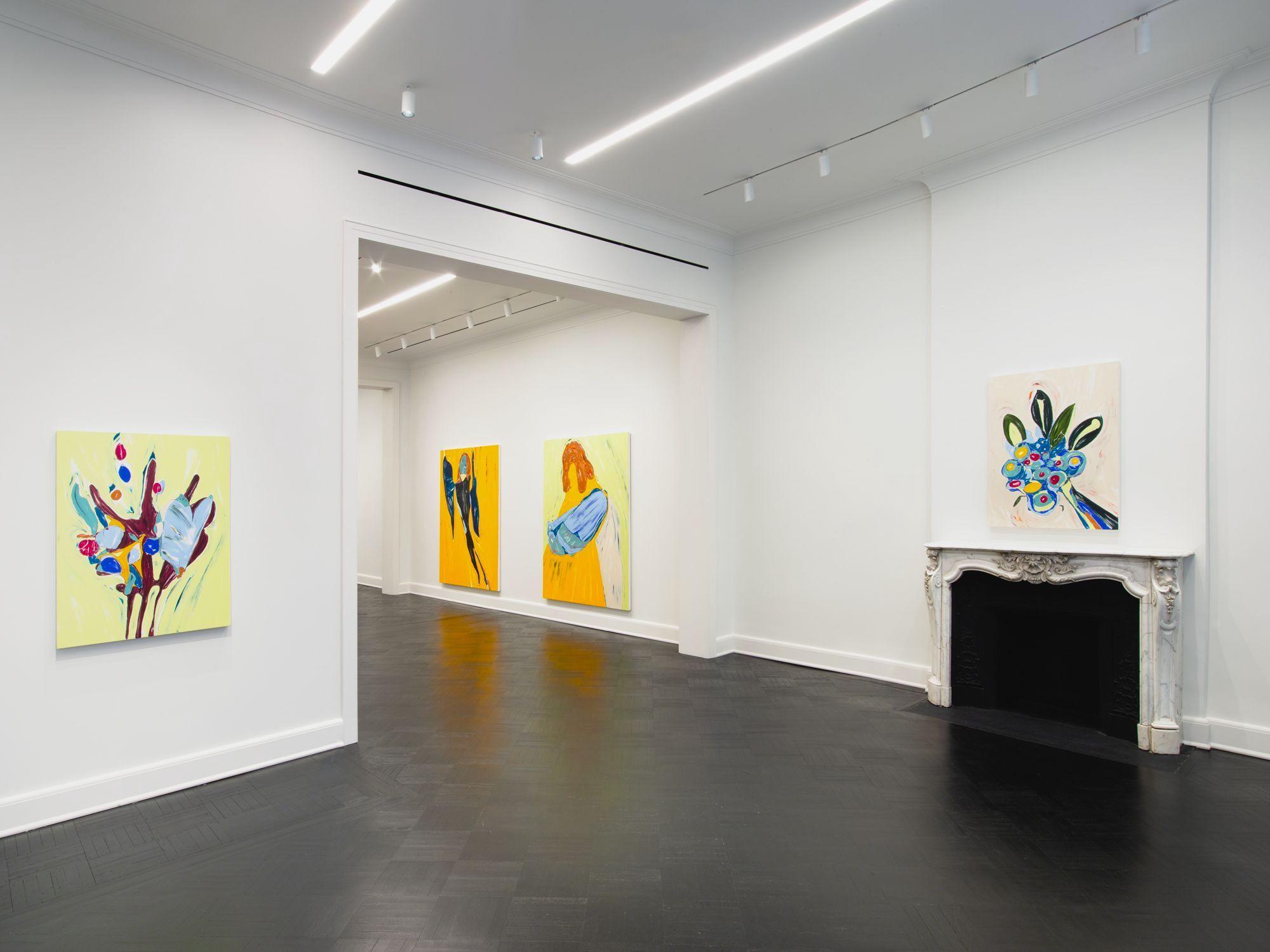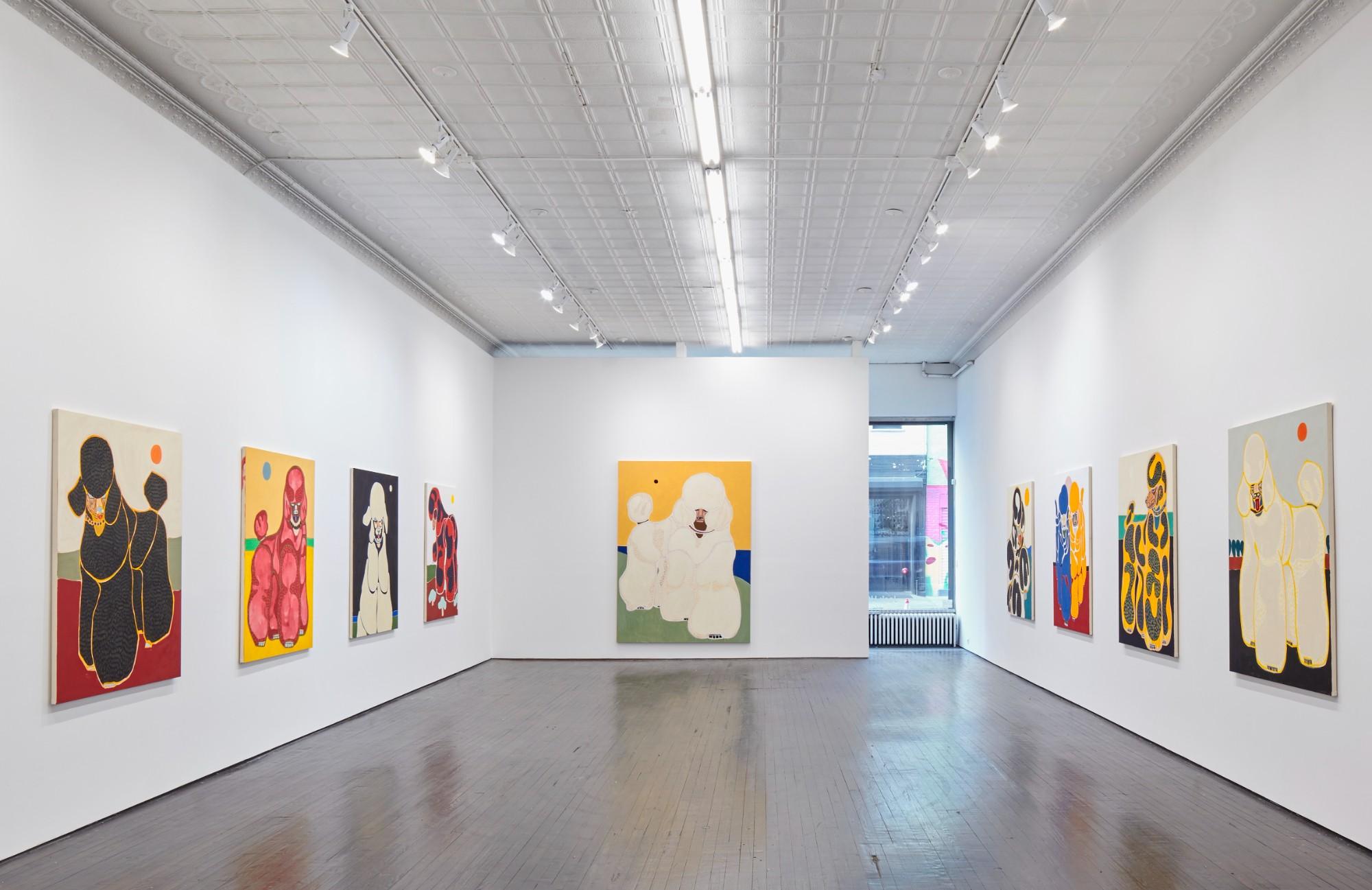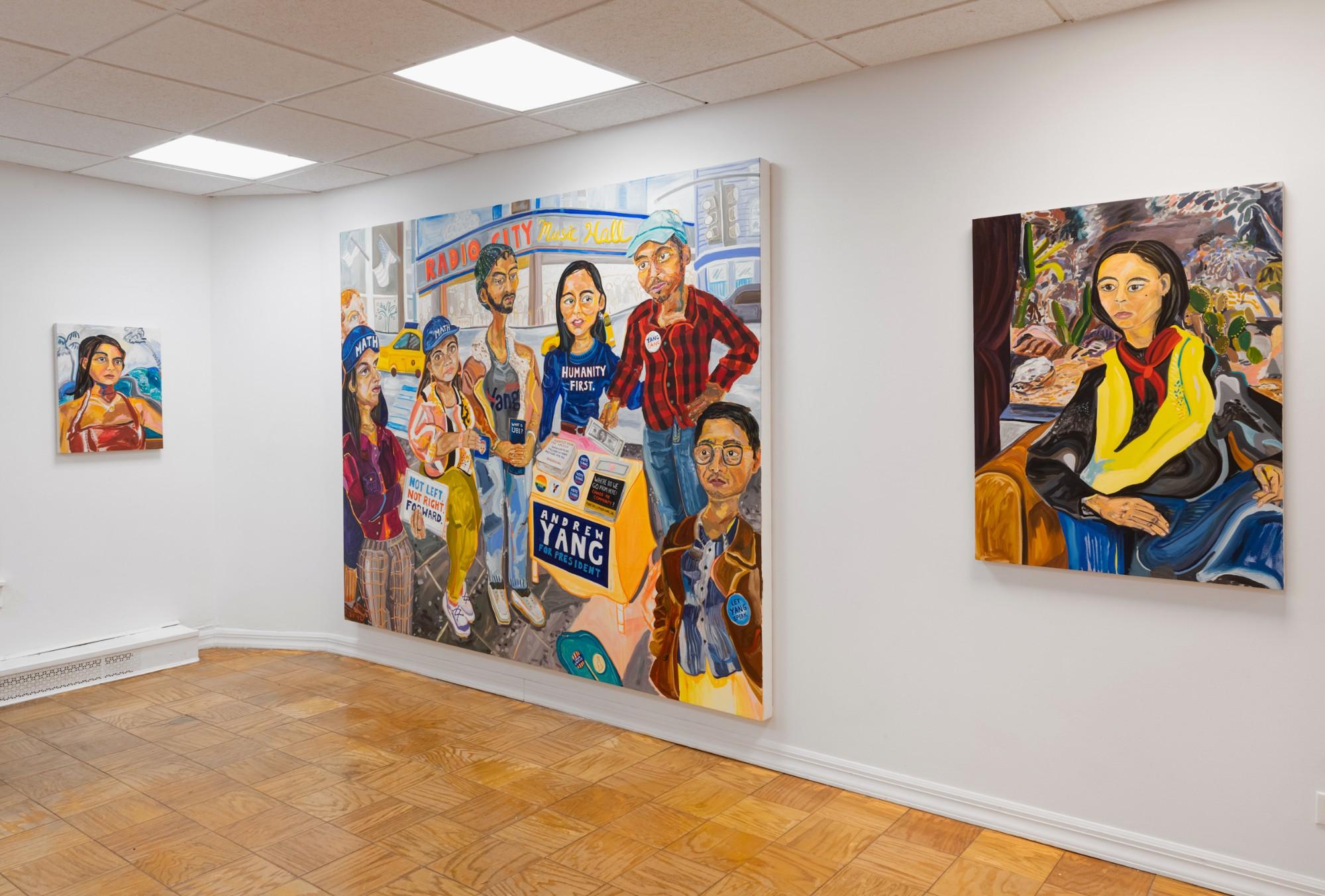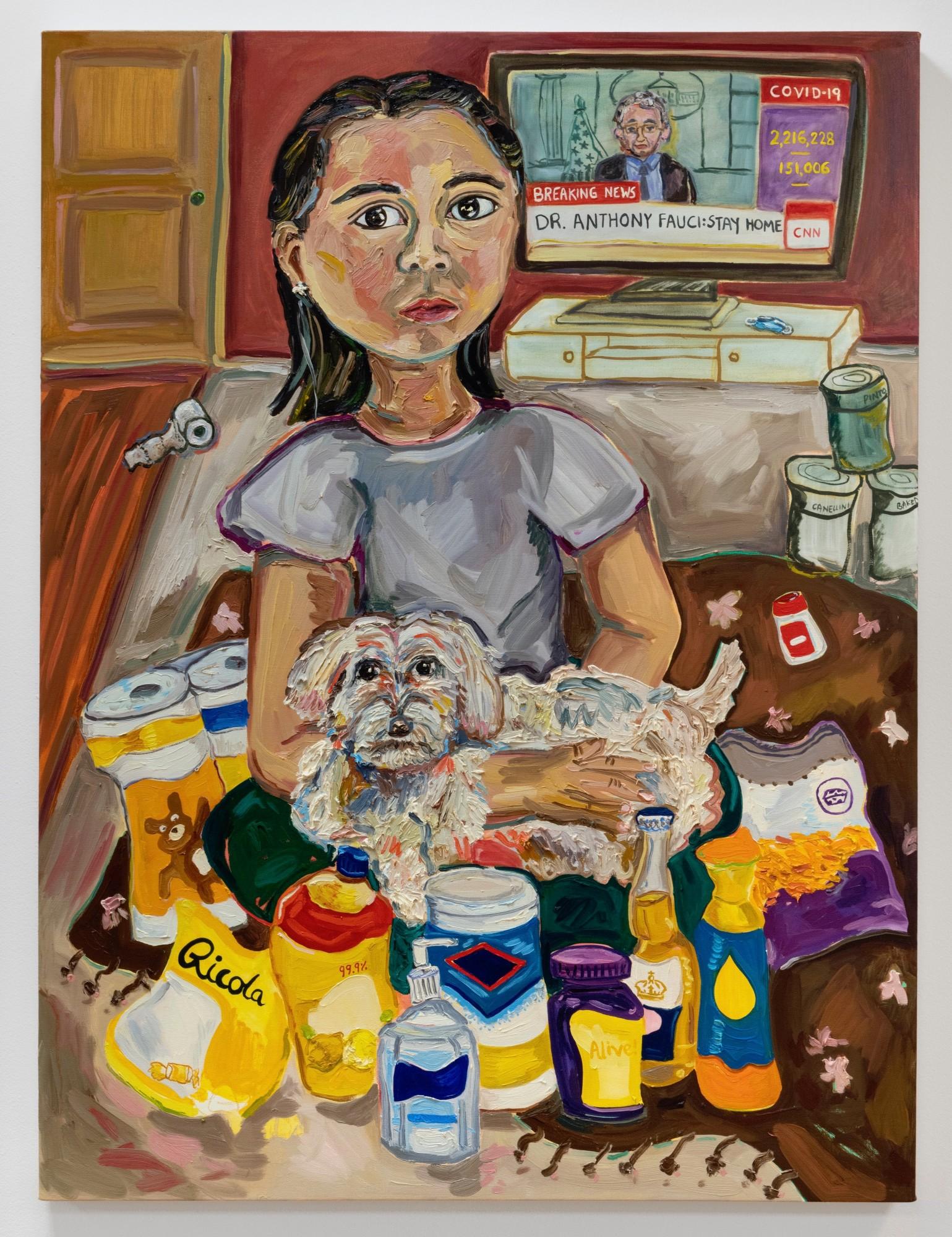Tal R: Boy Walking and Cinnamon: Sculptures and Paintings
Anton Kern Gallery
September 9 – October 24, 2020
A Tel Aviv-born Danish artist who lives and works in Copenhagen, Tal R has an encyclopedic knowledge of European modernism, which he playfully taps into when making his colorful paintings and sculptures. With more than a hundred one-person exhibitions worldwide since 1994, the artist is making his solo show debut with Anton Kern Gallery, after nine previous one-person outings in New York.
Presenting 15 recent, large-scale still life paintings and 12 bronze sculptures, Tal R turns the first two floors of the dynamically designed gallery into a lively playground of color and form. Rendered in a crude, childlike manner akin to the work of an Outsider artist, his flatly composed paintings feature toys on tabletops, flowers in vessels, and birds in cages. Inspired by the soul-searching short stories of Polish writer Bruno Schultz that were compiled into the 1934 book The Cinnamon Shops, the introspective paintings take us back in time—both in the objects portrayed, which have a straightforward, folksy quality to them, and the simple, color-saturated depictions of the still life subjects and their semi-abstract settings.




